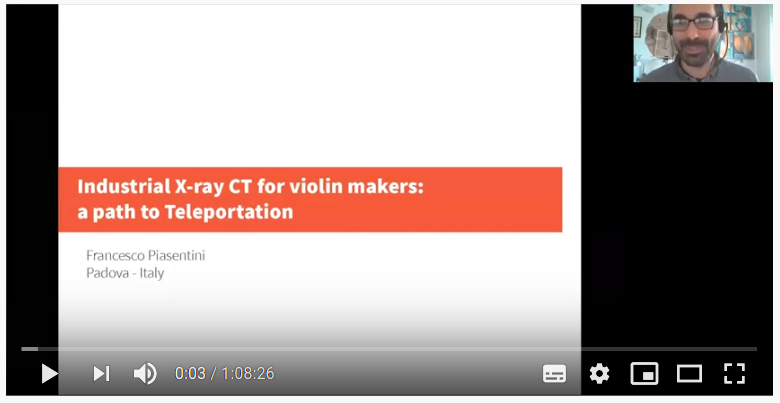
Presented at the “Sharpening the scientific tools for violin making” on-line conference, held 5-9th of October 2020 and organized by Claudia Fritz . The program of the event is available here. Videos of the various presentations are hosted at the Institute Jean le Rond d’Alembert youtube channel.
Industrial computed Tomography (or iCT) is a fast-growing technique. Nowadays it is well known among violin makers and restorers as a powerful diagnostic tool.
High resolution images allow an in-depth analysis of musical instruments and an unprecedented insight on their actual conditions. But iCT move things a little bit further, with its ability to “dematerialize” objects into small voxels (cubic pixels). Like for medical scans, these data can be converted into accurate internal and external surfaces and sent to a 3D printer on the other side of the ocean. These surfaces can be used as reference for mould and template design, or for digitally comparing several violin of the same author hosted in different places in the globe. Makers will gradually move from using only rulers and callipers to work with 3D polygonal mesh and NURBS Surfaces.
Teleportation of shapes is already possible, a new milestone for the global community of violin makers. Next to iCT, 3D structured light scanning is a more affordable tool for “dematerializing” shapes. Example of an economic set-up will be discussed. What can iCT and 3D light scanning provide for makers? I will try to answer this question by going through a typical work-flow of iCT scanning, inspecting and reverse engineering of a violin. Examples of iCT applications to the daily work of makers will be given, including extracting 2D contours, 3D printing and milling replicas.